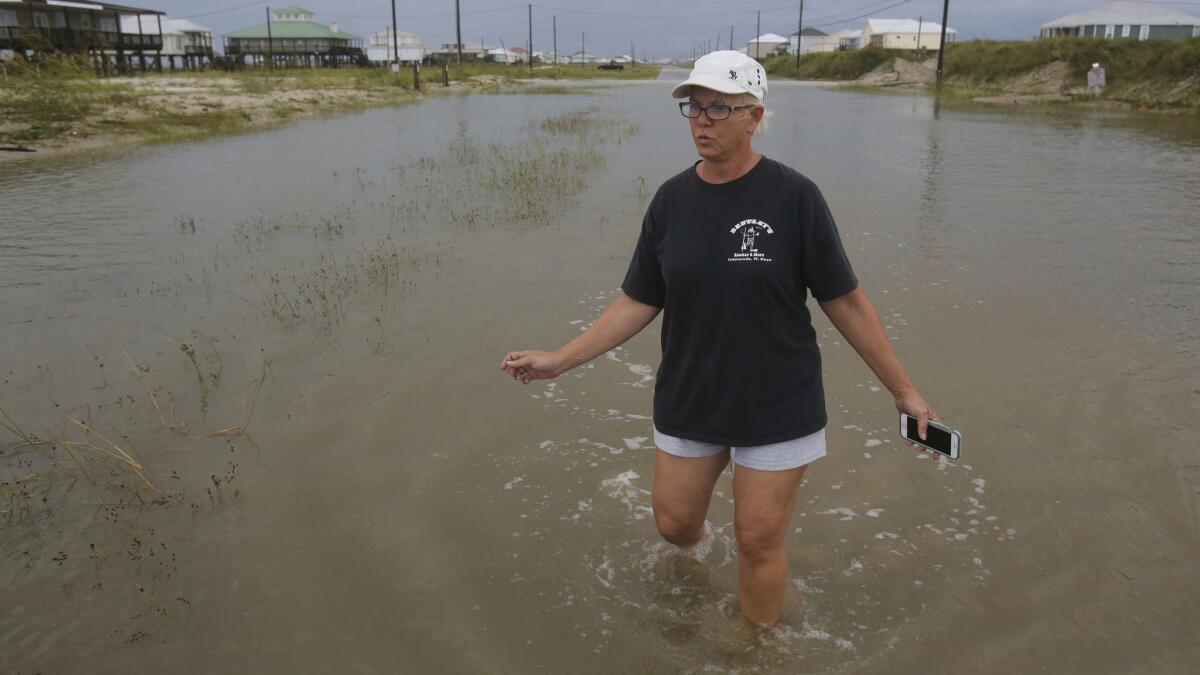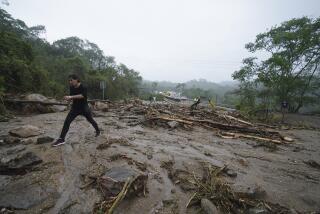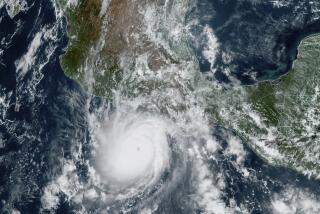Tropical Storm Gordon weakens after striking the Gulf Coast

Tropical Storm Gordon weakened to a depression early Wednesday after striking near the Alabama-Mississippi border and drenching the Gulf Coast with heavy rain.
Gordon fell short of becoming the first hurricane this year to strike the mainland United States, making landfall Tuesday night near Pascagoula, Miss., with sustained winds of 70 mph, just below hurricane-force.
Still, the storm flooded roads and brought down trees and power lines. Authorities in Escambia County, Fla., reported the death of a child Tuesday night after a tree fell on a mobile home near Pensacola.
By Wednesday morning, Gordon was about five miles west of Jackson, Miss., moving northwest with maximum sustained winds of 30 miles per hour.
The National Hurricane Center warned of strong wind gusts and possible tornadoes Wednesday and Wednesday night over Mississippi and western Alabama.
Gordon was expected to drop about 4 to 8 inches of rain over parts of Florida, Alabama, Mississippi, Louisiana, Arkansas, Missouri, Iowa and Illinois, the Hurricane Center said. Officials warned of flash flooding, with some areas potentially seeing up to 12 inches of rain through early Saturday.
As Gordon weakened Wednesday, the National Hurricane Center continued to track a far more powerful storm way out in the Atlantic. Florence, a Category 3 hurricane with sustained winds of 125 miles per hour, is about 1,370 miles east-southeast of Bermuda.
Florence is forecast to gradually weaken over the next few days, but should remain a strong hurricane through early next week. Still far from land, it has prompted no coastal watches or warnings.
The governors of Alabama, Louisiana and Mississippi had declared states of emergency as Gordon lurched towards their coasts, but most areas emerged relatively unscathed Wednesday morning as the National Hurricane Center lifted its hurricane and storm surge warnings.
Along the Gulf Coast, more than 35,000 customers were without power, and emergency crews worked to clear roads and restore power lines.
With many roads across coastal Alabama, Florida and Mississippi submerged, officials urged residents not to attempt to drive or walk through flooded roads or paths.
“Turn Around, Don’t Drown!” the National Weather Service in Mobile, Ala., posted on Twitter.
The Gulf Coast experienced its last hurricane in October, when Nate, a Category 1 hurricane, made landfall at the mouth of the Mississippi River. A combination of winds, storm surge, flooding and tornadoes caused about $225 million in damage to property and agriculture, mostly in southwest Alabama.
This year’s hurricane season is expected to be less active than that of 2017, when Harvey, Irma and Maria caused widespread destruction in Texas, Florida and Puerto Rico.
The National Oceanic and Atmospheric Administration’s Climate Prediction Center recently downgraded its May forecast, saying conditions in the ocean and atmosphere had changed. The center lowered its forecast for the Atlantic hurricane season, saying it expected nine to 13 named storms and zero to two major hurricanes for the year.
UPDATES:
9:15 a.m.: This article was updated throughout with staff reporting.
This article was originally published at 4:30 a.m.
More to Read
Start your day right
Sign up for Essential California for news, features and recommendations from the L.A. Times and beyond in your inbox six days a week.
You may occasionally receive promotional content from the Los Angeles Times.







